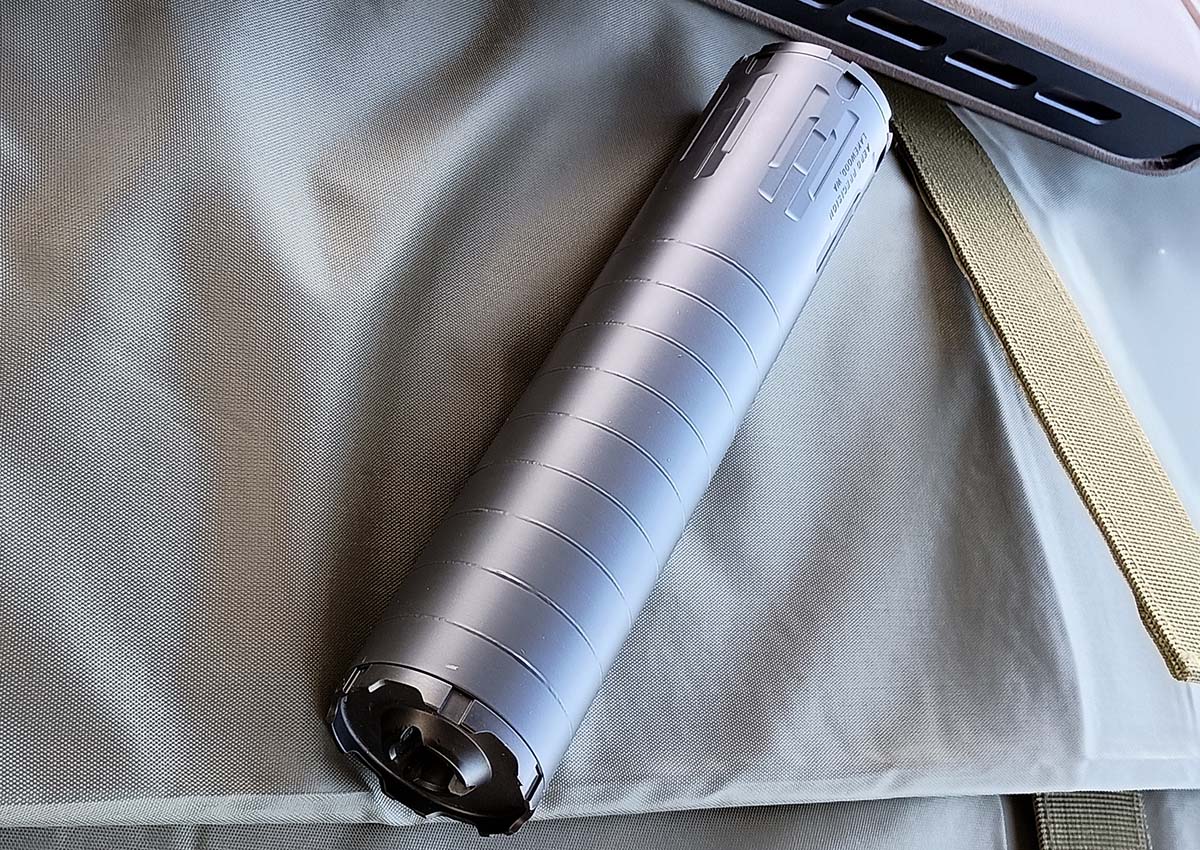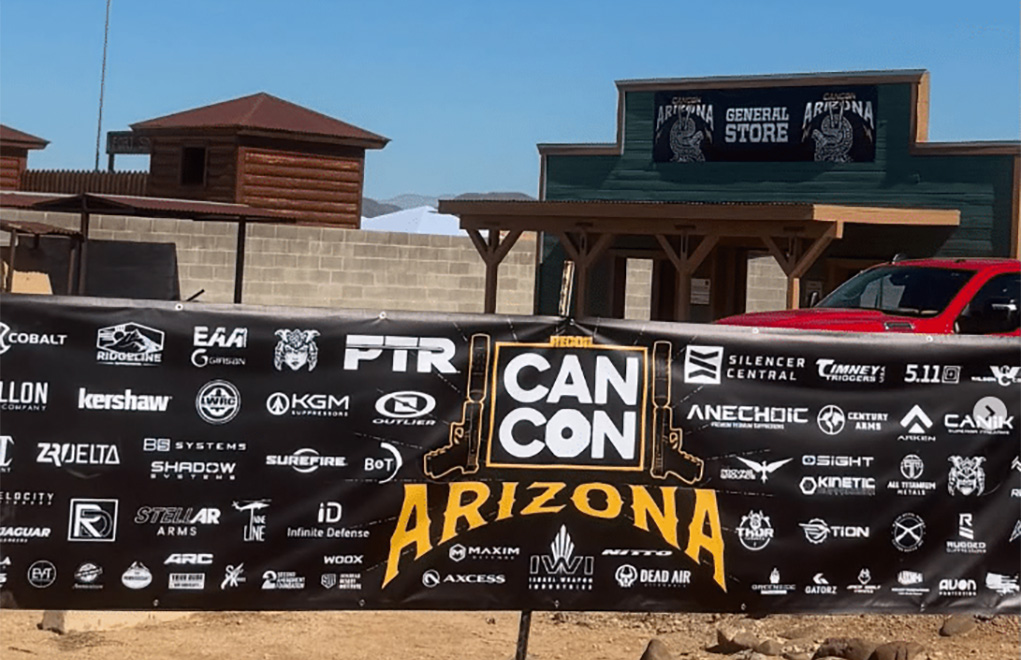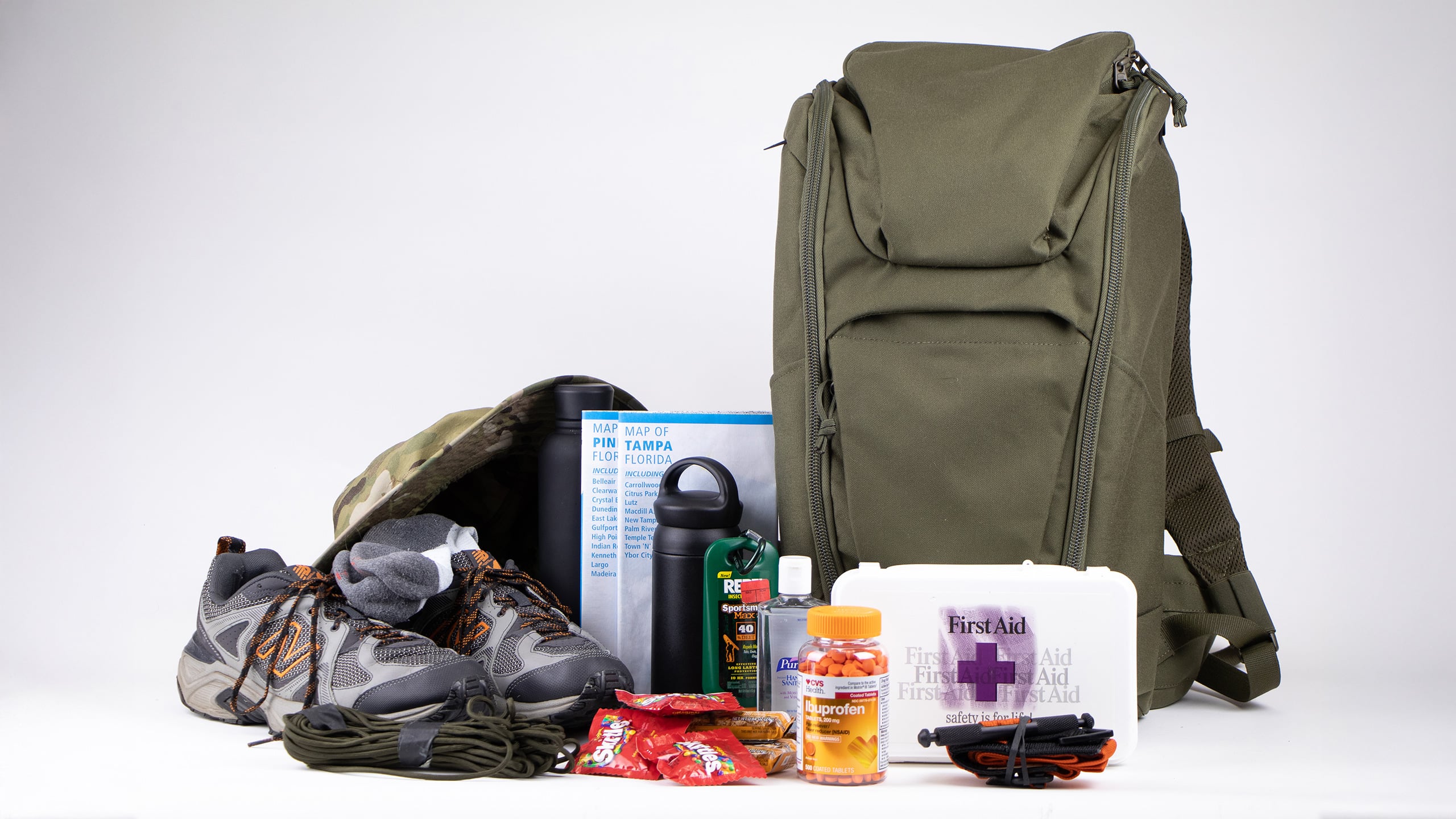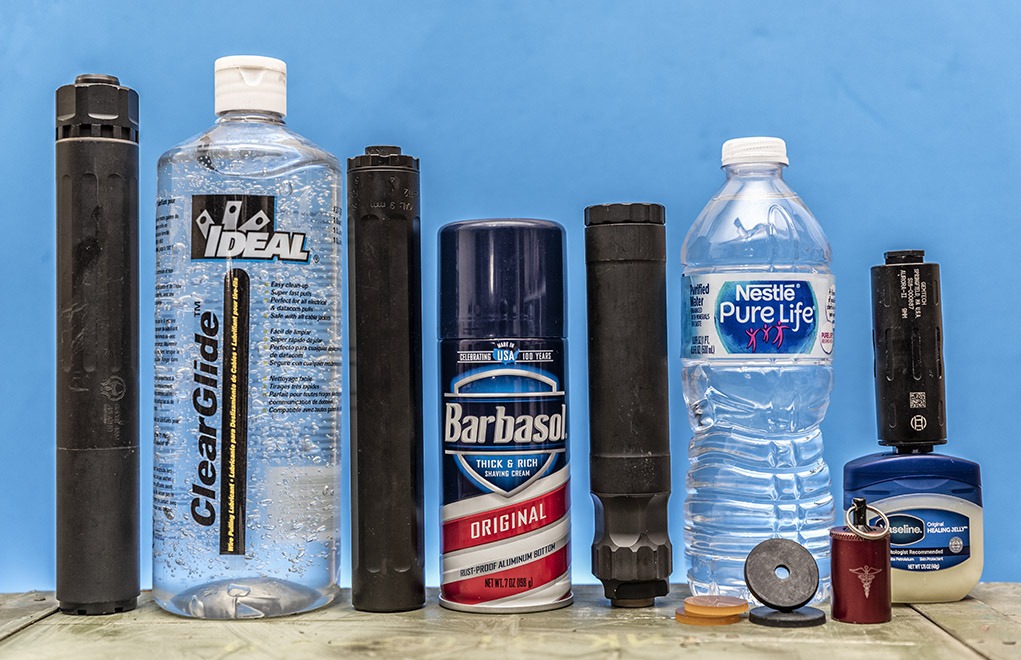Aero’s largest suppressor to date—the Lahar 30L—does a number on a long-range rig.
It’s more than about keeping quiet.
Sure, sound suppression is the main selling point of suppressors—heck, it’s there in the name. Yet there’s more to the high-tech tubes than simply protecting your hearing and among the most beneficial, shooting performance.
This attracted me to the Papa Bear offering from Aero Precision’s almost newly minted Lahar line of suppressors. Supersized, built as tough as old boots and—in the world of suppressor—light on the pocketbook, the Lahar 30L has everything to make it a dandy addition to a precision rig. But does the can take a tack driver to new levels?
Lahar 30L Specs
Length: 7.7″
Diameter: 1.58″
Weight: 19.9oz
Material: 17-4 Stainless Steel
Thread: 5/8-24
Endcap: HUB
Finish: Black Cerakote
MSRP: $799
Pros
- Outstanding Sound Suppression
- Notable Recoil Reduction
- Versatile Mounting
Cons
- Size and Weight
- Not Ideal for All Builds
Lahar 30 Suppressors

Like an old friend, Aero has been there for shooters over the years offering up dialed-in, yet affordable, AR components. It was only recently—in 2023 to be exact—the company took advantage of the sizzling suppressor market and began making the muzzle devices—the Lahar series.
At present, the line of 30-caliber suppressors is comprised of three suppressors, essentially identical except for baffle count and length:
- Lahar 30K: 4 baffles, 5.1” in length, 12.9oz. weight
- Lahar 30: 6 Baffles, 5.9” in length, 15.4oz. weight
- Lahar 30L: 9 baffles, 7.7” in length, 19.9oz. weight
What the line brings to the table is a rock-solid design, fully-auto rated and tested to put up with more abuse than you or I could dole out. This starts with Lahar’s baffle design, with an Inconel blast baffle and stainless-steel secondary baffles. Stainless steel provides the ruggedness the suppressor requires at the muzzle end, while the Inconel (nickel-chromium alloy) gives the can excellent thermal and corrosion-resistance qualities.
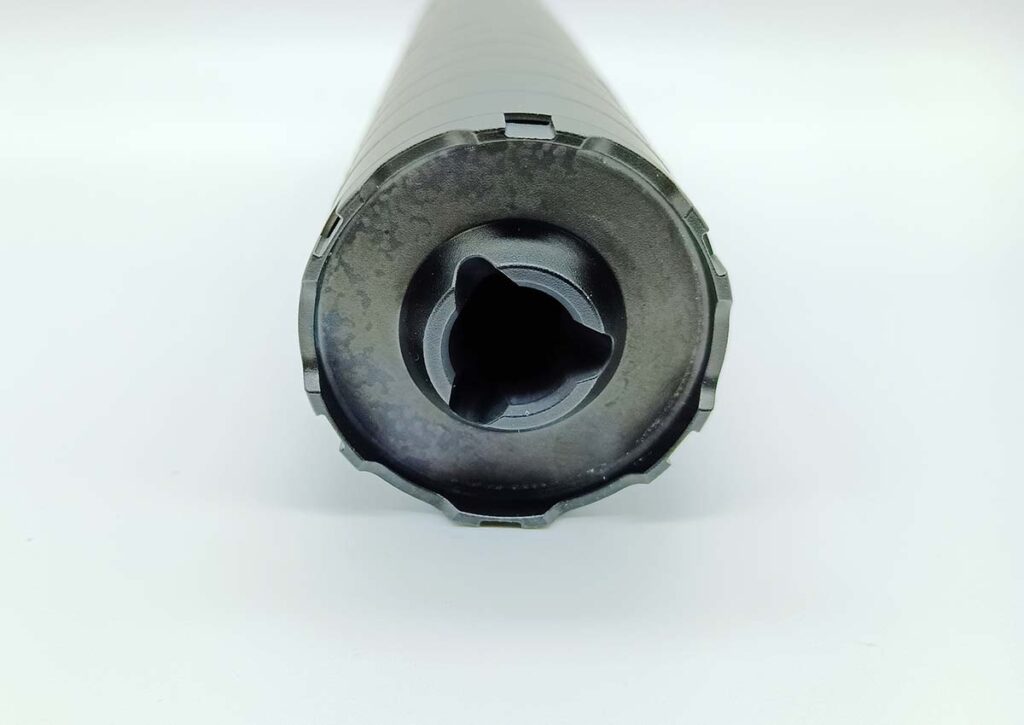

Next, the Lahar design is tubeless (welded), with the dual benefit of lightening up its overall weight while creating a larger internal volume—thus making it better at its job. There’s debate on whether welded suppressors are as robust as their tubed counterparts, valid especially when joining two materials as in the case of the Lahar. Aero understood this problem and invested a good deal of sweat equity to get it correct and use a laser joining system able to withstand U.S. Special Operations testing.
One final point on the design, Aero made the line somewhat user-serviceable, not always the case with tubeless suppressors. The company opted for removable front and end caps, allowing some access to the stack and making cleaning a world easier.
A quick note on the end cap, it’s threaded 13⁄8×24, or “HUB”, in turn, it is compatible with a number of muzzle devices on the market making QD compatibility painless. If you like to keep things simple, it comes installed with a 5⁄8×24 direct-thread end-cap.
At the Range With The Lahar 30L
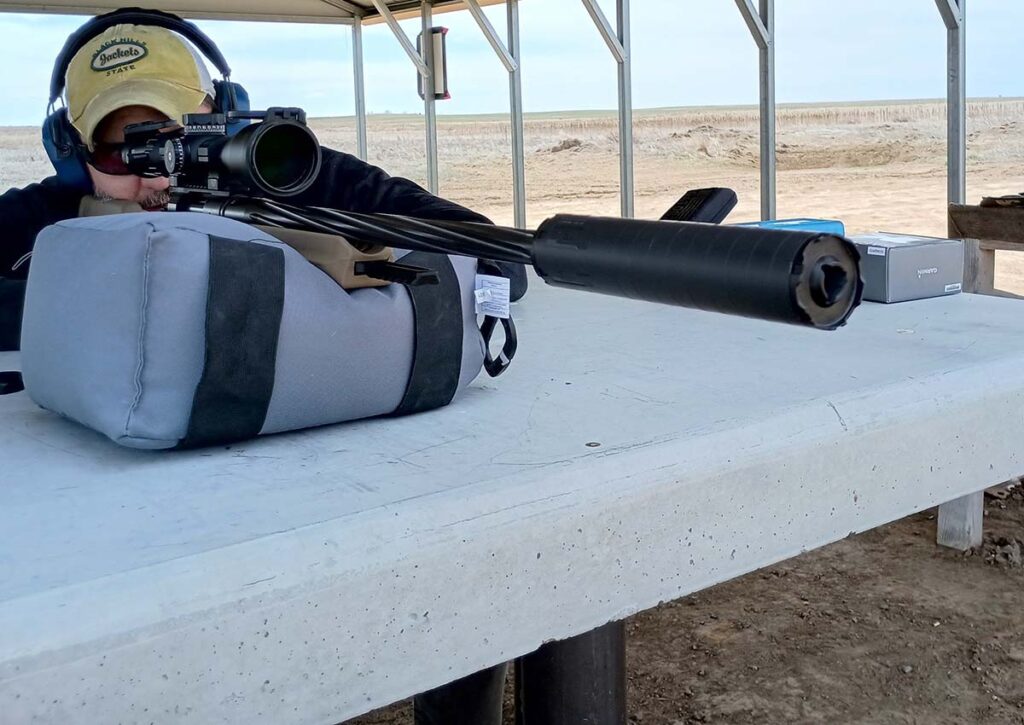

I opted to mount the Lahar 30L on a Stag Pursuit Bolt-Action in 6.5 Creedmoor. While the 30L is suitable for any rifle, depending on usage, it’s particularly suited this rifle given its 20-inch barrel and precision bent. Additionally, a slightly smaller caliber than the can’s upper limit also helped put Aero’s factotum design approach to the test.
Overall, I walked away impressed with what the can brought to the table, particularly in the Lahar 30L’s accuracy enhancement potential. With handloads, the Stag is typically a .75-inch rifle at 100 yards—if I do my part. With the suppressor on the muzzle, it trimmed the groups down to an average of .68-inches through 50 rounds. Much of this is thanks to its impressive ability to mute the gun’s recoil to roughly what I gauge as a souped-up .22—something like a .22-250 Remington or .223 Remington.
Sound suppression was also top-notch, but I was expecting this. We torture-tested a load of cans at CANCON Carolina and the Lahar 30 came out the quietest at the muzzle quieting a 5.56 NATO down to 141.9 dB. The larger 30L did the same number on the 6.5 Creedmoor, the proof in the pudding being hearing shots hit the target—paper and plywood—at 200 yards. Impressive in my book.
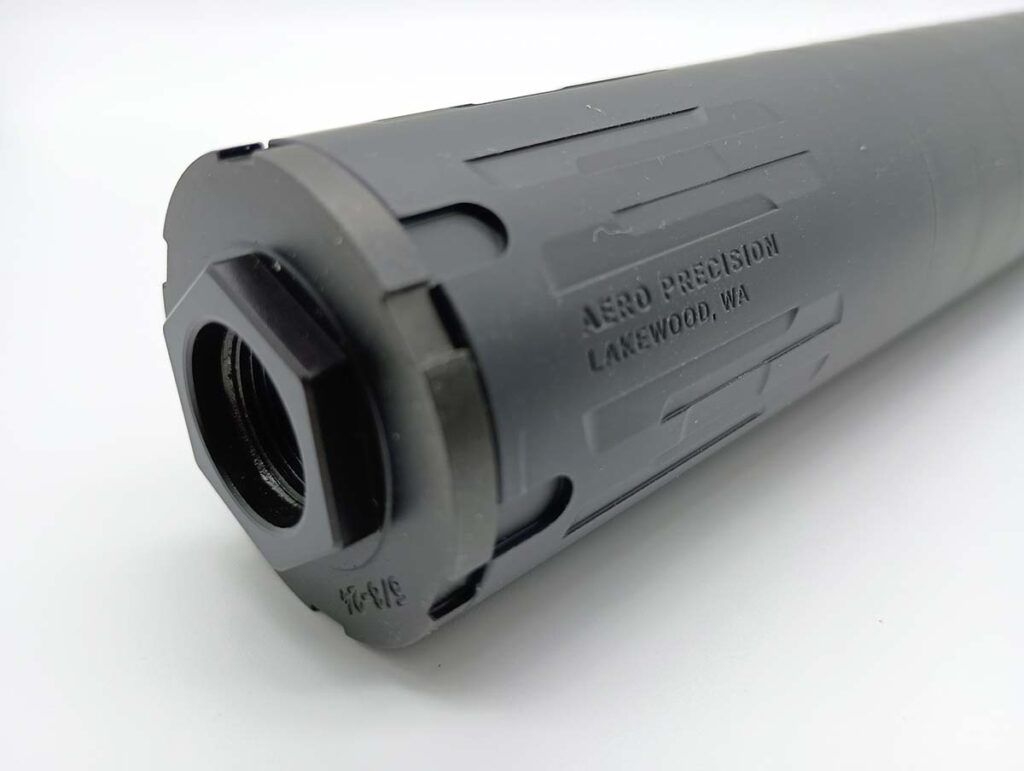

One last positive on the Lahar 30L worth mentioning, it blew heat off like a champ. I ran the can fairly hard on a hot day, getting it hot enough that I couldn’t handle it bear-handed. But on average, a 3-minute rest was all the suppressor required to come back down to manageable temperatures.
The only chink I found in the Lahar 30L’s armor is its size. Given it has a substantial amount of stainless steel in its construction and is 7.7 inches long, this is of little surprise. In the case of the front-heavy Pursuit, it moved the rifle’s fulcrum well forward. This isn’t an issue on this particular iron, given I shot supported—bipod or shooting bags—the entire day. However, for rifles shot offhand, particularly those meant to remain nimble, this might not be a shooter’s first choice.
So, where does the 30L fit in?
In my opinion, a precision rig would benefit greatly from the big-dog suppressor—be it aimed at casual, competitive or varmint long range. The can makes a substantial difference in felt recoil, takes a spell to throw up a heat mirage and reduces shooting fatigue. Thus, if support concerns aren’t an issue the Lahar 30L does its job and well.
Parting Shot
Aero didn’t just scale up a suppressor—they refined it. The Lahar 30L tames recoil, tones down the report, and tightens groups, all without breaking the bank. It’s big, sure, but for a supported precision rig, it’s a beast worth threading on. For those chasing hits at distance and consistency in every trigger pull, this can isn’t just a nice-to-have—it’s a smart move.
More On Suppressors:
Read the full article here







